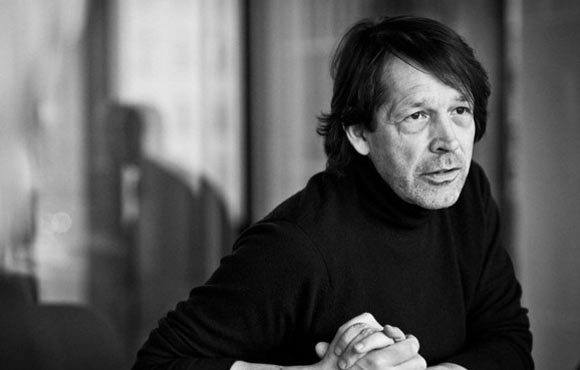
Peter Saville is deemed one of the most popular British graphic designers and art directors of the generation. He gained popularity by designing several record sleeves for Factory Record, while serving as art director of the studios.
Born on October 9th, 1955, in England, Peter Saville grew up in Manchester, Lancashire. He received his early education from St Ambrose College. In 1965, he went on to attend Manchester Polytechnic to study graphic designing and remained there till 1978. After his meeting with the famous record label owner, presenter and journalist, Tony Wilson, in 1978, Saville entered the music scene. The meeting played significant role in ensuring Saville future with the Factory Record, as he was commissioned the first poster. In the years to come, Saville would become a board member in the studios in partnership with Rob Gretton, Martin Hannett, Alan Erasmus and Wilson.
Saville designed a number of record sleeves for Factory Records artists. Some of his notable clients were Joy Division and New Order. A fellow student influenced him to develop interest in Herbert Spencer. He was highly inspired by chief propagandist for the New Typography, Jan Tschichold, about whom he read in Herbert Spencer’s Pioneers of Modern Typography. According to Saville, the subtlety of the chapter “New Typography” penned by Tschichold, appealed to him. He drew parallels between the work and the New Wave that emerged out of Punk.
In 1980, Saville designed cover for Joy Division’s last album, Closer. The album was released shortly after the punk-band member Ian Curtis’ suicide, featuring a controversial image of entombed Christ’s body. However, the cover was designed before the tragic loss of the band which was later proved by the rock magazine New Musical Express working on the feature based on the album, several months earlier. During 1980s Saville’s work took a turn from conventional graphic designing to unorthodox. A well-known design critic Alice Twemlow described Saville’s designing practice as that he would irreverently pick an image from some historical art and then de-contextualize and recontextualize it in another art. For instance, he combined the colour-coded alphabet with Fantin-Latour “Roses” painting, showcased on New Order’s Power, Corruption and Lies (1983) album cover.
Before joining Factory Record as a partner in the late seventies, Saville moved from Manchester to London and took up the position of art director at the Virgin offshoot. He created a body of work that explored his sophisticated take on Modernism. Some of his major clients included, Orchestral Manoeuvres in the Dark, King Crimson and Ultravox. He received twenty thousand sterling pounds, the highest amount he ever made by designing record sleeves, from Gabriel for designing his album So (1986). Subsequently, he established the design agency Peter Saville Associates in partnership with Brett Wickens and was also invited by Pentagram to join their firm.
In 1993, Saville moved from his homeland and relocated to Los Angeles, United States. His relocation was largely due to the fact that he was offered partnership at the ad agency, Frankfurt Balkind. However, he returned to London and re-opened the designing studio with Howard Wakefield. They earned the title ‘The Apartment’, for Saville’s modernist apartment that was featured in popular covers like in the album This Is Hardcore by Pulp. In the following years, Peter Saville produced some brilliant artwork, achieving creative and commercial success. In 2004 he consulted as Creative Director of the City of Manchester and in 2010 designed home shirt for English football team.

